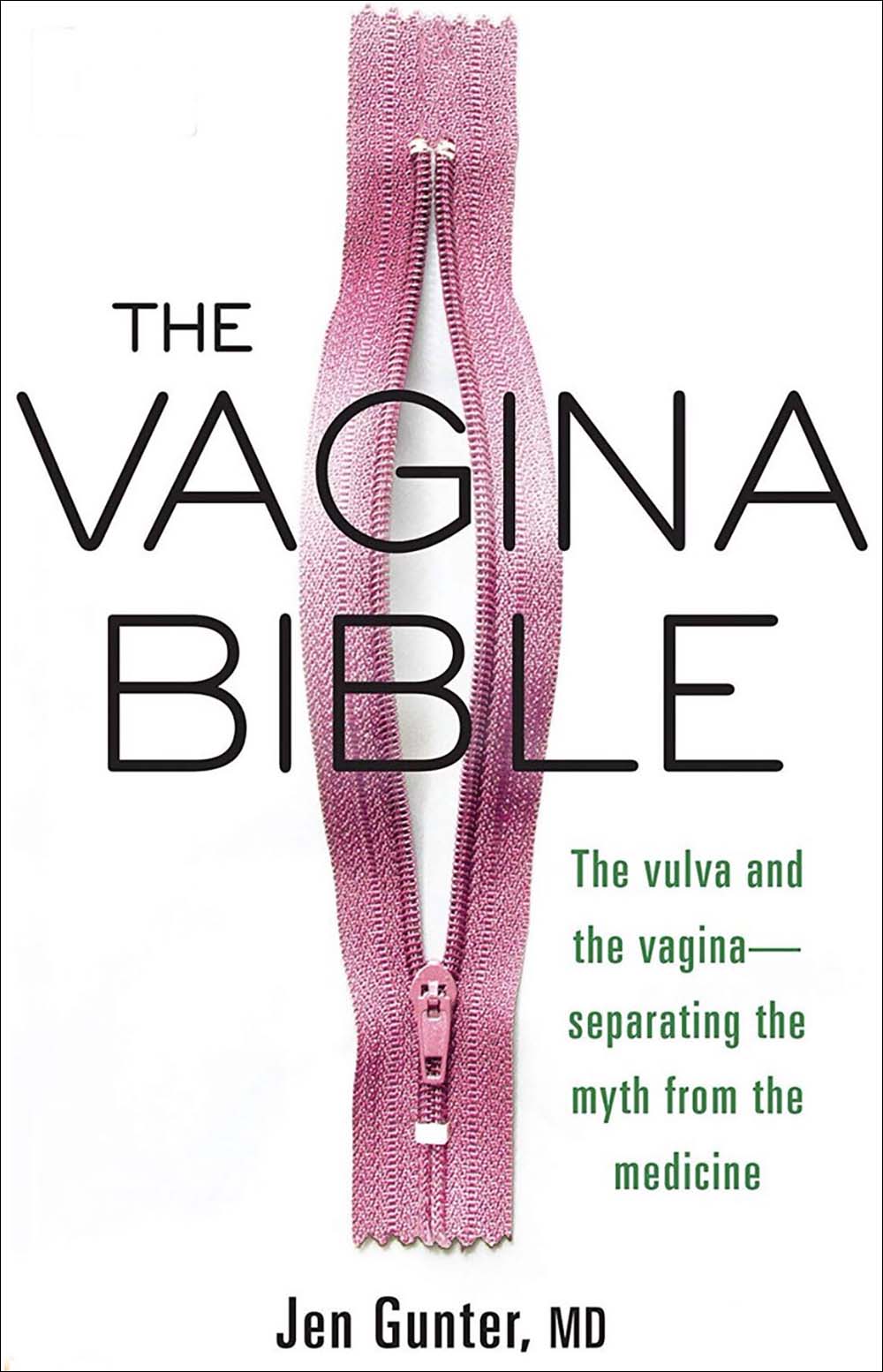There are no good doctors. That was the conclusion of a group of women who came together at a women’s liberation conference at Emmanuel College in 1969 to discuss their relationship to their bodies and their medical providers. Calling themselves the “doctors group,” they began meeting regularly to compare notes on their experiences and sift through medical information themselves. The eventual result was the classic women’s health book “Our Bodies, Ourselves,” which aimed to give women empowering, medically accurate information they couldn’t find anywhere else.

BOOK REVIEW — “The Vagina Bible: The Vulva and the Vagina: Separating the Myth from the Medicine,” by Jen Gunter (Citadel Press, 432 pages).
Originally a 193-page-pamphlet, it went on to sell more than four million copies and was translated into 31 languages. But last April, the Boston Women’s Health Collective — which had been updating the book — announced it no longer had the resources to develop new editions. Instead, excerpts from the 2011 version would remain on the collective’s website, “marking the end of an era for a revolutionary feminist text,” according to Smithsonian.com.
Much has changed since 1969. For one thing, abortion is legal (though access is still patchwork and its future is not assured); for another, we have the internet. What hasn’t changed is the urgent need for accessible information about women’s bodies. A 2013 survey of 1,000 American women aged 18 to 40 found that 40 percent were unfamiliar with the ovulatory cycle. A 2018 survey of more than 15,000 Australian women found that one in four younger women avoided asking their doctor important questions about their reproductive health.
Into this void has stepped Jen Gunter, a Canadian-born gynecologist and New York Times columnist who also believes that the medical system is still failing women. “Undoing medical mythology is hard,” she writes in her new book, “The Vagina Bible: The Vulva and the Vagina: Separating the Myth From the Medicine.” “We have been steeped in it generationally, and medicine has not done a great job of communicating or caring for women. If historically you have been dismissed, it seems only natural to turn elsewhere — especially if that person you turn to is welcoming and actually listens.”
Given how long doctors have neglected women’s bodies, Gunter says, she can understand why so many gravitate toward wellness fads. But pseudoscientific cures like vaginal steamers, G-spot plasma injections, or vaginal tightening sticks are not your friends: they’re scams perpetuated by a $4.2 trillion global wellness industry whose goal is to sell expensive products under the guise of “freshness” and “purity.” In “The Vagina Bible,” she dismisses trendy products that promise to “effectively mask natural odors” and give a “wonderful tropical scent” with one line: “It’s a vagina, not a piña colada.”
Gunter, who has a formidable Twitter following, doesn’t skimp on the science. In her hands, each myth becomes an opportunity to marvel at the biological miracle that is the reproductive tract. Take the vaginal microbiome, that teeming mixture of millions of bacteria that keeps the vagina at roughly the acidity of a glass of red wine. One of her biggest takeaways is that your vagina, far from being a delicate flower perched on the edge of catastrophe, is a powerful, self-sustaining machine — “a self-cleaning oven” and “the ultimate multitasker.” Together, the vagina and the vulva (the vulva is the outside; the vagina is the inside) wield a protective oily layer of skin, a shield of hair and mucus that traps dirt and debris, and an army of bacterial soldiers.
Yet many products marketed by the wellness industry, she warns, can interfere with this balance — particularly vaginal douching, usually with a mixture of water, vinegar and fragrance. Despite being warned by experts about douching’s dangers, almost one in five American women still cleanse in order to avoid odors or discharge.
Because of how the vagina works, cleansing can actually lead to worse odor, more discharge, and potentially more serious side effects, like an increased risk for STIs. By stripping the vagina of its natural protection, cleansers leave this intimate bodily portal susceptible to hordes of anaerobic bacteria. The result is often bacterial vaginosis (BV), the most common vaginal infection, affecting around one in three adult women. BV commonly makes itself known as a thin white discharge, an unbearable itchiness around the vulva, and a fishy smell caused by the chemical compounds cadaverine and putrescine.
As a result, women often find themselves locked in a cycle of frustration, exhaustion, and self-blame. Gunter wants to break that cycle by helping them recognize that many qualities they’ve been taught to worry about — especially vaginal smell — are completely normal. “There has been no change in causes of genital odor over the past 25 years,” she writes. “What has changed is the proliferation of products designed to shame women about the normal smell of their body and tame the female genital tract for some misogynistic ideal.”
The douching myth can be traced back to the 1920s, when the home cleaning brand Lysol marketed itself as a feminine cleanser. Douching with Lysol, advertisements promised, would “help protect your married happiness” and “keep you desirable!”
More modern myths abound. Eating pineapple won’t make your vagina taste sweeter, because food doesn’t contribute directly to vaginal taste or smell. Smearing yogurt on your vulva won’t fix a yeast infection, because the strain of lactobacilli in dairy isn’t the same as the one in between your legs. Wearing lace panties won’t lead to “vaginal mayhem,” because fabric doesn’t change the acidity of the vagina.
Do-it-yourself remedies for yeast infections in particular are a “medical whack-a-mole,” Gunter says. In fact, she has some bones to pick with the authors of “Our Bodies, Ourselves.” The online version still highlights the testimonies of women who claim to have successfully beaten yeast infections by “inserting plain, unsweetened, live-culture yogurt in the vagina” or “inserting garlic suppositories.” These remedies, Gunter points out, have no evidence of working — and yet women constantly ask her about them today in her San Francisco practice.
Gunter is hardly the first author to use science to demystify the female body. In 1999, for example, New York Times science journalist Natalie Angier wrote “Woman: An Intimate Geography,” a lyrical study of the female body seen through the lens of the latest scientific advancements. Ten years later, science writer Mary Roach’s “Bonk” elucidated the science of sex, separating misconceptions about women’s bodies from medical facts. In 2013, gender scholar Emma Rees traced the roots of vaginal mythology in “The Vagina: A Literary and Cultural History.”
Few of these books, however, were written by medical doctors. And that makes a difference.
There are moments in “The Vagina Bible’’ where Gunter seems to be giving two contradictory messages: trust your body, but also … don’t trust your body. Simply put, she says, the female body has overlapping wiring. Certain vaginal health conditions can look and feel exactly the same, like a yeast infection and a UTI. That’s why fewer than half of women who self-diagnose yeast infections are correct. “The vulva and vagina are unreliable narrators,” Gunter explains. “Most vulvar and vaginal conditions are essentially pulling the same fire alarms.”
That’s a comforting idea, because it assures women that their bodily quirks are shared by millions of others. But ultimately, it forces them to rely on medical experts to help interpret their symptoms. And not all women are equipped to choose a good doctor or have the means to make a choice in the first place. It’s the same concern that animated the authors of “Our Bodies, Ourselves.”
In some ways, Gunter is part of the same mainstream medical system that the original women’s group sought to topple. Yet even though she can’t single-handedly fix a flawed system, as a gynecologist who has spent more than 25 years listening to women, she is well positioned to offer strategies for locating good medical information online and effectively articulating your symptoms and concerns to your doctor.
“Power and health are inseparably linked,” she writes. “I want every woman to have the power that comes with knowing how her body works and how to look for help when her body may not be working as she hoped it would,” Gunter adds.
Perhaps there are some good doctors, after all.
Rachel E. Gross is writing a book for W.W. Norton on the history of how anatomists mapped the female body. She was formerly the digital science editor at Smithsonian Magazine, a reporter at Slate Magazine, and a blogger at The New York Times. Her work has appeared in The Atlantic, National Geographic, New Scientist, Science, and The Jewish Daily Forward. In 2018-2019 she was a Knight Science Journalism fellow.











Comments are automatically closed one year after article publication. Archived comments are below.
Misogyny and sexism in healthcare have held science back for decades. All of the misinformation and outright lies have been incredibly profitable. Unfortunately physicians like Gunter, are not selling anything, so she won’t be making the rounds of the daytime TV shows.
The word “bible” has many definitions. One definition is, in fact, related to Christianity, another is not.
“bible (noun): a book regarded as authoritative in a particular sphere.”
In this case it is a book regarded as authoritative in all things vagina, hence a Vagina Bible.
And since when are vaginas sacrilegious?
Guess what? Lil’ Baby Jesus was birthed out of the Virgin Mary’s VAGINA. (ooohh! so scary and sinful to think about!)
Grow up.
I would like young ladies and middle age women to learn that you always need to remember that little rule we learned while doing puzzles ” YOU DON’T PUT THINGS WHERE THEY THEY DON’T BELONG AND WHAT GOES UP MUST COME DOWN”! So many times I have heard these young girls talking about the crystal eggs meant to give you energy, cure infertility etc. They do NOTHING! Tampons that go up must come down you must take them out! Not “FORGET” about these until you get this “smell”
I have assisted in helping physicians fish out these things and So much more because of an old wives tale told them of this crystal or this bunch of crushed bag of herbs.
It is amazing how much girls are embarrassed by their own bodies.
How dare you use the holy word “bible” in the title of your book? Your book is not a Bible in anyway shape or form. Do you know what the Bible is and what it means?? I doubt is because if you did, you wouldn’t have referred to it in the title of your book. Sacrilegious.
The word bible is from the Latin for book. Christians use the term ‘The Bible’ (capitalized) to refer to their particular holy book. Other people use the word bible (lower-case) to refer, by association, to any book of significant importance in any discipline. Get over it.